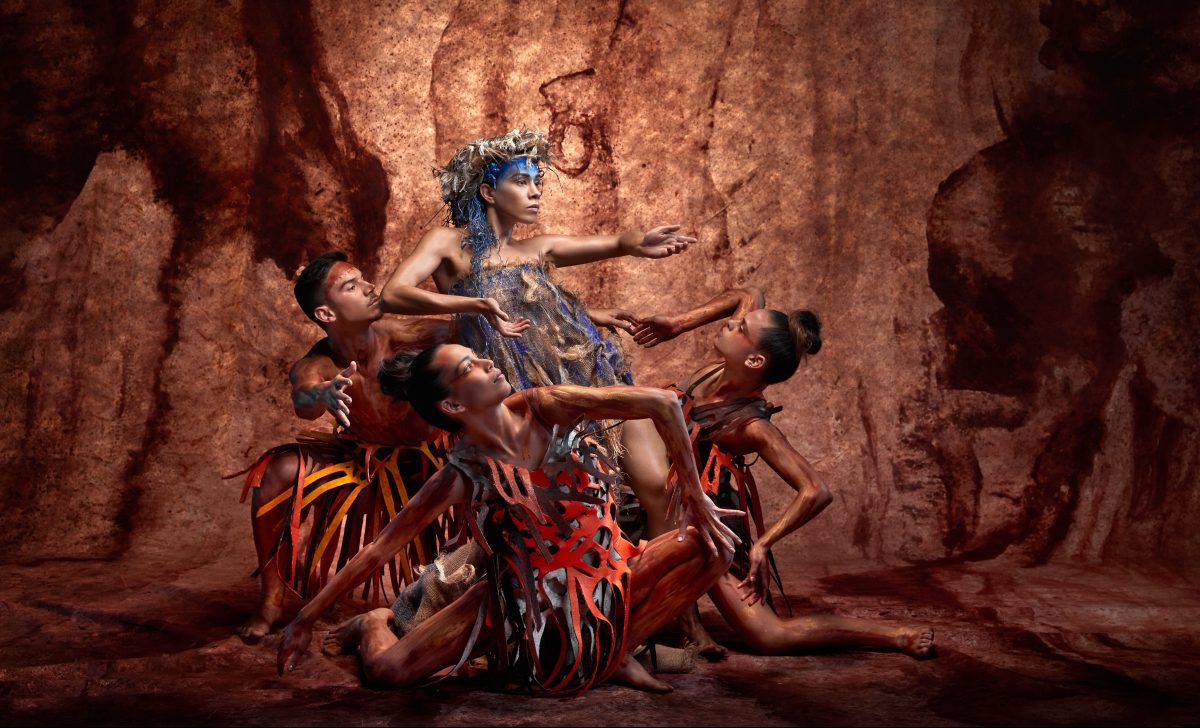‘We are here to tell their story – and carry that forward,’ said Frances Rings, Bangarra’s Associate Artistic Director, of the Indigenous Elders of the Kimberley and Great Sandy Desert regions whose stories inform the company’s latest work.
Rings was addressing audiences on the opening night of SandSong, marking the dance company’s return to the lands of the Kulin Nation/Melbourne, after three years’ absence.
SandSong is a treasure, exploring a multitude of emotions while telling a tragic story, that of the dispossession and exploitation of the Wangkatjungka and Walmajarri People. What is most palpable in the work is the kinship, lore and survival of the Peoples of this beautiful region, in the face of the ugliness and brutality of colonisation.
Each work by Bangarra takes typically three to four years to make, starting with the dancers on Country spending time with Indigenous Elders. At the culmination of a work’s life cycle, once it has been staged across Australia, Bangarra returns to Country to perform the work, in thanks and acknowledgement of the reciprocal relationship between the story and Country. This is what makes Bangarra so unique, so deeply connected to the land upon which they dance and the stories they honour, and this shines through every moment in SandSong.
The work, co-choreographed by Frances Rings, outgoing Artistic Director Stephen Page and the dancers of Bangarra, is broken into four acts, each telling an intricate and engrossing story. SandSong opens with projections of a caliginous hue, arranged by audio-visual designer David Bergman. The soundtrack is deafening, punctuated with screeching machinery. The stage is set for the cruelty and terror that will follow, as the Kimberley region is violently seized by colonisers with no regard to the true owners.
Read: Shifting sands: Shaping the future of Bangarra
The use of projections and lighting during the performance is striking as the many moods of SandSong wash over and into each other: sometimes these transitions emulate reeds in the wind, at other times, wildfire.
The backdrop glows in warm chrome during the early scenes, as the dancers, also doused with gold paint, spin and flow over the stage shaking sand from their exquisite garments (kudos to costume designer, Jennifer Irwin). The dancers move so beautifully in these pieces, leaning into the tilt of the circle formation the choreography centres around.
There are reminders of ceremony and ritual as songs of the region are played and the dancers enter the stage with handwoven baskets and piles of smoking foliage. These additions to the dances, sometimes airy, sometimes percussive, add to the sublimity of the work and remind audiences of the deep reverence the dancers show to Country.
There is a palpable rupture in the work where colonialism rears its dark and gruesome head; the dancers spin off into pained, highly physically demanding sequences in unison, to the soundtrack of whip cracks and a cattle market commentator. Deeply uncomfortable and reflective viewing in this section.
Read: Theatre review: The Phantom of the Opera
The work culminates in a powerful sequence of pas de deux. The female members of the company wear red and black skirts that flounce fiercely as they turn; the men are similarly bold, glowing in the red and sombre lights. They lift and fold into their partners, ending in a collapsed embrace. The sound track ends in poetry, as a voice says: ‘This is your Country, your home… I am waiting for you…there is water, there is air, there is light, there is dust. You belong to this Country’.
As the dancers eddy into each other, their bodies seem to soak in the words. I was left with an overwhelming sense of awe at the connection to Country and commitment to expressive movement that the Bangarra dancers show, something many of us might be yearning for after such a discombobulating time post-2020.
SandSong: Stories from the Great Sandy Desert
Arts Centre Melbourne, Playhouse
Choreographers: Stephen Page and Frances Rings
Composer: Steve Francis
Set Designer: Jacob Nash
Costume Designer: Jennifer Irwin
Lighting Designer: Nick Schlieper
Lighting Realiser: Chris Twyman
Cultural Consultants: Putuparri Tom Lawford and Eva Nargoodah
Cultural Contributors: Wangkatjunga and Walmajarri Elders
Tickets from $49
SandSong will be performed at Arts Centre Melbourne until 3 September 2022





